The 4 Most Tasty Ways to Cook Lobster Tail
How to Cook Lobster Tails
Even while they can appear like a sophisticated dish that belongs on a special night out, lobster tails are actually pretty easy to prepare at home. The tails are delivered frozen and prepared for cooking, and merely melted butter and a touch of lemon complement their meaty texture and sweet flavor well. Of course, you could also prepare a delicious lobster roll or lobster risotto with the meat chopped up.
There are numerous methods you can use to prepare lobster tails, depending on your kitchen tools and available time. You can choose your own cooking journey by using this guide to some of the most common ways to prepare lobster tails.
Purchasing Lobster Tails
There are two varieties of lobster tails.
- You probably first picture Maine lobsters, which resemble the ones you'll see in seafood boils. They have a sweeter flavor, making them my particular favorite, but they can be more expensive and hard to get.
- Rock or spiny lobsters are simpler to discover and lack claws.
Tails can range in size, but if you want to serve one as a main course to each guest, aim for six to eight ounces each.
What Are the Most Effective Ways to Cook Lobster Tails?
The four most popular methods of cooking lobster tail are shown here, along with the benefits and drawbacks of each.
1. Boiling
Pros: It requires no preparation and is the fastest cooking method (although it takes some time to get the water to boil).
Cons: Meat may cook unevenly and boiling consumes a lot of water.
2. Steaming
Pros: Steaming is quicker and uses less water than boiling. Additionally, lobster tails can be steamed entire or butterflied.
Cons: You might have to do your task in batches.
3. Baking
Pros: Baking is a hands-free cooking technique that produces tasty, uniformly cooked meat. Furthermore, it uses a tiny amount of water. (This is my preferred approach.)
Cons: The lobster tails must first be butterflyed, and cooking takes the longest.
4. Grilling
Benefits: There is no need for water, and you can baste the lobster tails with butter or sauce as they cook.
Cons: The lobster tails must first be butterflyed. Compared to boiling or steaming, grilling takes longer.
You Season Lobster Water, right?
When boiling lobster tails, season the water with salt so that the meat becomes salted during cooking. There is no need to salt the water when steaming or baking lobster tails because the meat is not in direct contact with the liquid.
What Signals the Lobster Is Done?
When the lobster is no longer opaque or when the thickest section of an instant-read thermometer reads 135°F to 140°F, it is said to be finished. Do your best to have the lobster just done because overcooked lobster is regrettably extremely chewy and rubbery. Additionally, keep in mind that carryover cooking can cause the temperature of the lobster to rise a few degrees if you don't serve it right away, so you can stop cooking it if the internal temperature is at the lower end of the temperature range.
Advice on How to Prepare Lobster Tails at Home
- Select the proper cooking technique. Determine the approach you want to take before you start, and make sure you have the necessary tools.
- Purchase tails of the same size. To ensure consistency in cooking time, try to purchase tails that are of the same size.
- Defrost the lobster tails. The majority of lobster tails are frozen when purchased, so be sure to safely thaw it overnight in the refrigerator before cooking.
- If you can, butterfly them. To ensure consistent cooking and make the lobster tails much simpler to eat, I like to butterfly them first.
- When not eating right away, take an ice bath. To halt any carryover cooking if you're not going to consume the tails right away or if you're going to use them cold, immediately after cooking, submerge them in an ice water bath for a few minutes. Dry them off, then remove the meat and store it in the fridge until needed.
- Belief Martha. If you cook the tails whole, Martha Stewart offers great advice for you on how to use a fork to quickly remove the meat from the shell.
Recipe For Cooking Lobster Tails
For flesh that is succulent and tasty, we discovered the four best ways to prepare lobster tails.
YIELDServes 4
PREP TIME10 minutes
COOK TIME6 minutes to 20 minutes
Ingredients:
1 to 4 (6 to 8 ounce) frozen lobster tails, defrosted
4 wooden skewers, entire, whether steaming or boiling
If boiling, add salt
Serving dish with melted butter and lemon wedges (optional)
To grill:
Olive oil or vegetable oil
INSTRUCTIONS
Defrost the lobster tails. Place the frozen lobster tails on a dish or baking sheet and defrost them in the refrigerator over night. If baking or grilling, butterfly the tails for the most even cooking. If boiling, leave the tails whole. You can butterfly the tails for steaming or leave them whole.
1. If necessary, butterfly the tails:
Lobster tails should be cut. Lay the lobster tails on a chopping board with the hard shell facing up after patting them dry. Cut through the top shell of each tail lengthwise with kitchen shears, starting from the thicker end and stopping when you reach the end of the tail.
2. Take the meat's shell off:
Working your thumb between the shell and the meat, carefully pry the top shell's meat away from it on either side with your fingers. To remove the flesh from the bottom shell, gently pry it up. At this stage, all the meat ought to easily come out of the shell. Put the meat inside the shell once more.
3. Dividing the meat
Cut the tail flesh in half lengthwise starting at the break in the shell using a chef's knife or kitchen shears, stopping until you reach the bottom shell (do not cut through the bottom shell). If necessary, open the tail like a book and gently press it down to flatten it (cover it with a towel before flattening it if the shell is sharp).
First Cooking Method: Boiling
Before cooking, do not butterfly the tails. To prevent the tail meat from curling when cooking, start at the fleshy end of each tail and put a wooden skewer into the meat as close to the shell as you can until you reach the other end of the tail. Remove any more skewers.
Over high heat, bring a sizable pot of strongly salted water to a boil. Add the lobster tails and cook them uncovered for 6 to 8 minutes, or until they are opaque throughout and reach a temperature of 135 to 140 °F. Take the tails out of the water with tongs.
2nd Cooking Method: Steaming
Butterfly the tails or leave them uncut. If leaving whole, stab a wooden skewer into the tail meat as close to the shell as you can until you reach the other end of the tail so that it won't curl up when cooking. Start at the fleshy end of each tail. Remove any more skewers.
Use a broad steamer large enough to accommodate the tails in one or two layers. Water should be added to the steamer, and it should be heated to a boil. Load the steamer with the lobster tails (flesh-side up if butterflied). Cover and steam for 4 to 5 minutes if butterflied or 6 to 9 minutes if left whole, or until opaque through and the internal temperature reads 135 to 140oF. If it threatens to boil over, keep the lid slightly ajar.
Third Cooking Method: Baking
Set a rack in the center of the oven and turn the temperature up to 425°F. the tails should be bowed. Place them in a baking dish that is just big enough to contain them, flesh-side up, in a single layer. Just enough water should be added to the baking pan to cover the bottom. Aluminum foil must be tightly affixed to the baking dish. Bake for 15 to 20 minutes, or until completely opaque throughout and the internal temperature reaches 130 to 135 °F.
Fourth Cooking Method: Grilling
350°F to 400°F is considered medium heat for an outdoor grill. the tails should be bowed. If necessary, clean the grill grates once it is ready. Apply a light coat of vegetable or olive oil on the lobster meat. Place flesh-side down on the grill with the thicker end closest to the hottest areas. Cook with the lid on the grill for about 5 minutes, or until grill marks emerge on the bottom.
Change the tails. Cover the grill and cook for an additional 3 to 5 minutes, or until the lobster meat is completely opaque throughout and the internal temperature reaches 135 to 140 °F.
Lobster tails should be served. If desired, serve the lobster tails with lemon wedges and melted butter for dipping.
COOKBOOK NOTES
Butterflied lobster tails can be prepared up to 4 hours in advance. When you're ready to cook, refrigerate.
Storage: You can remove cooked lobster meat from the shells and store it in the refrigerator for up to two days.
Recipe By: https://www.thekitchn.com/
Related: Pickled Fish Recipe: How to Make the Perfect Pickled Fish
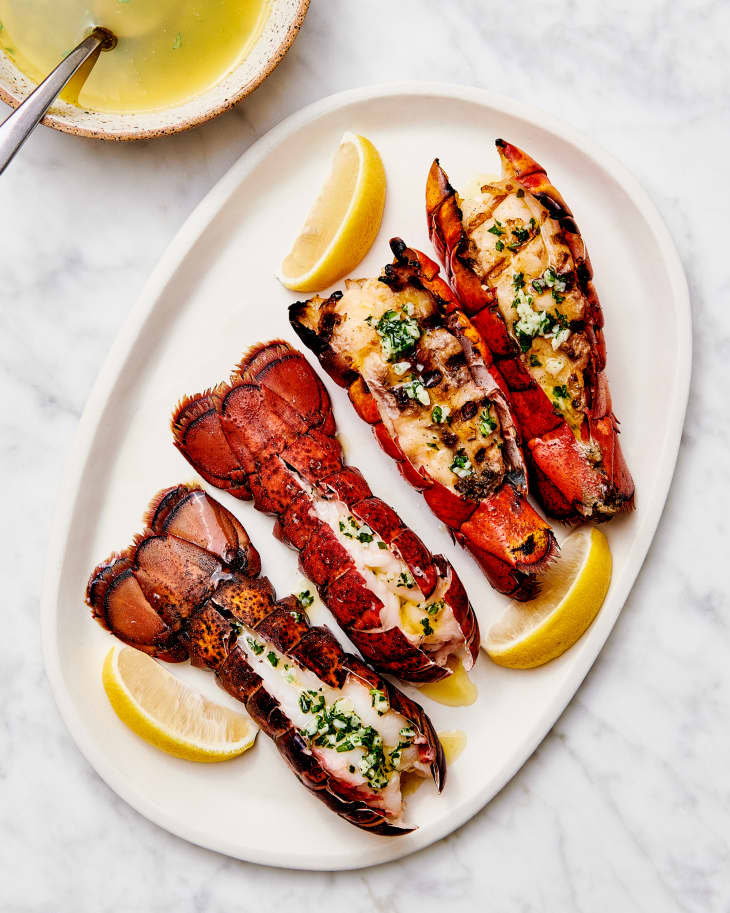
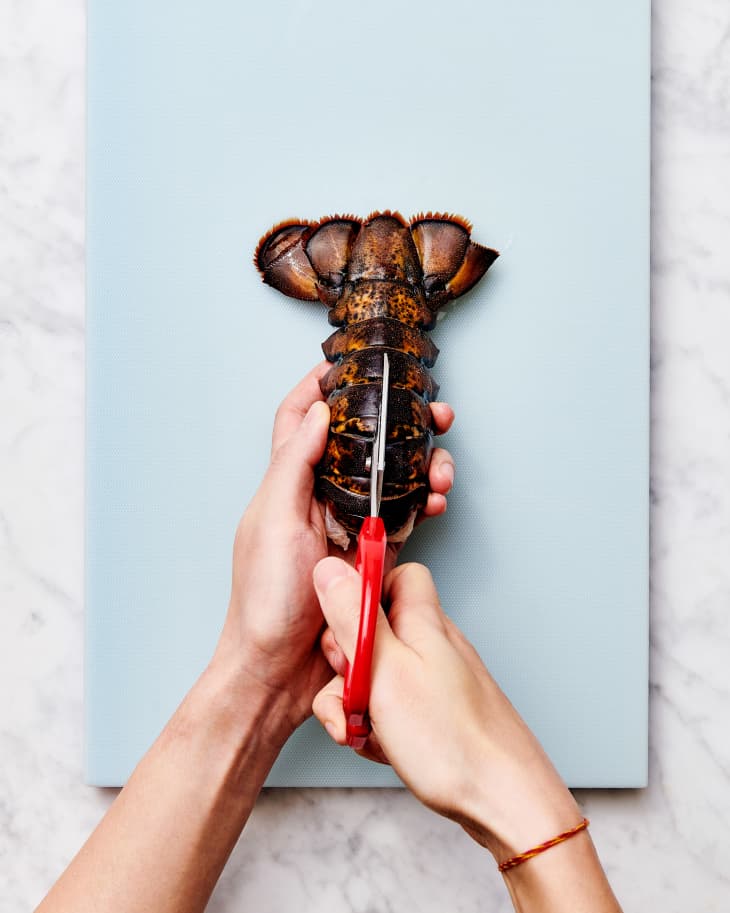
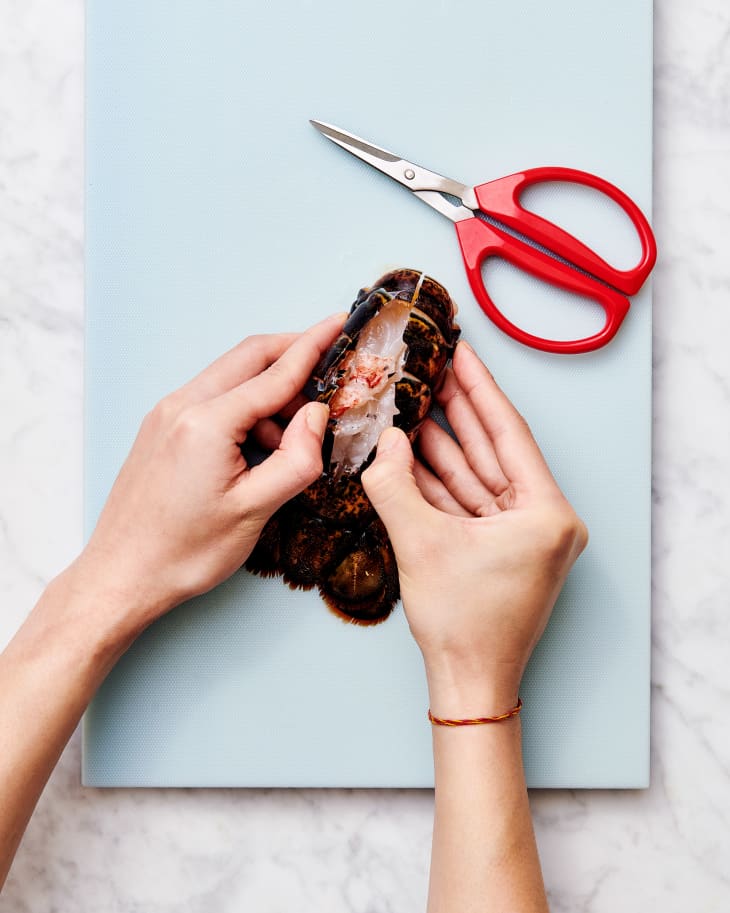
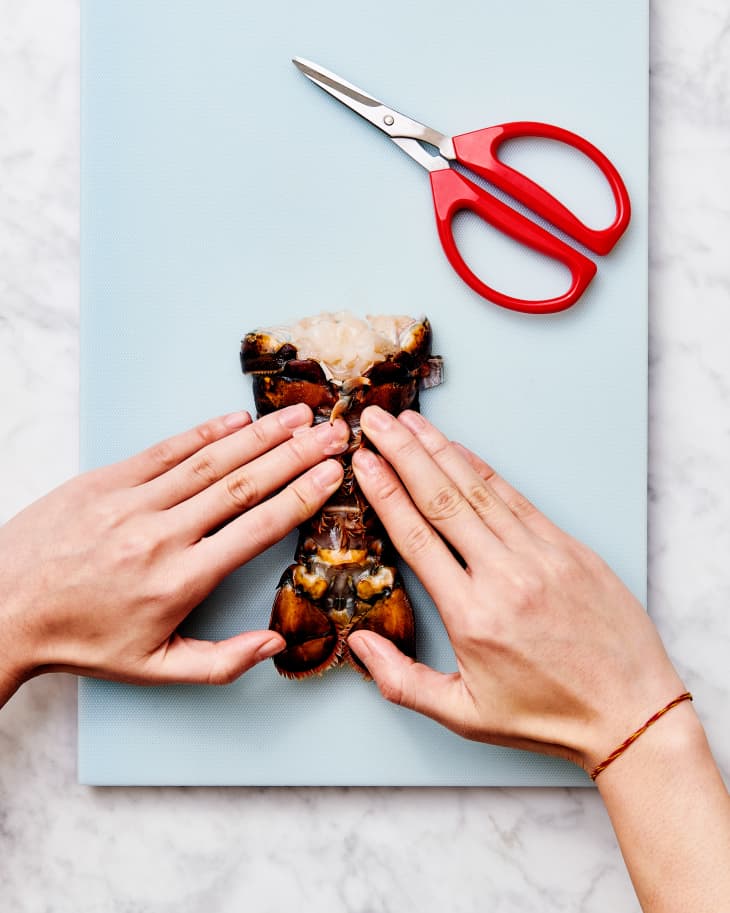
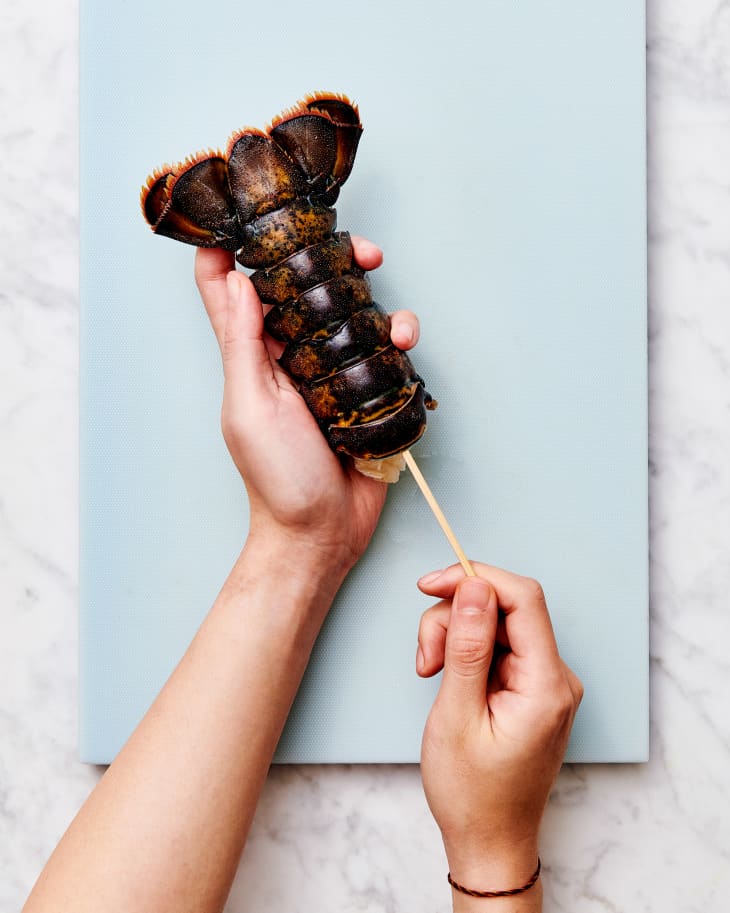
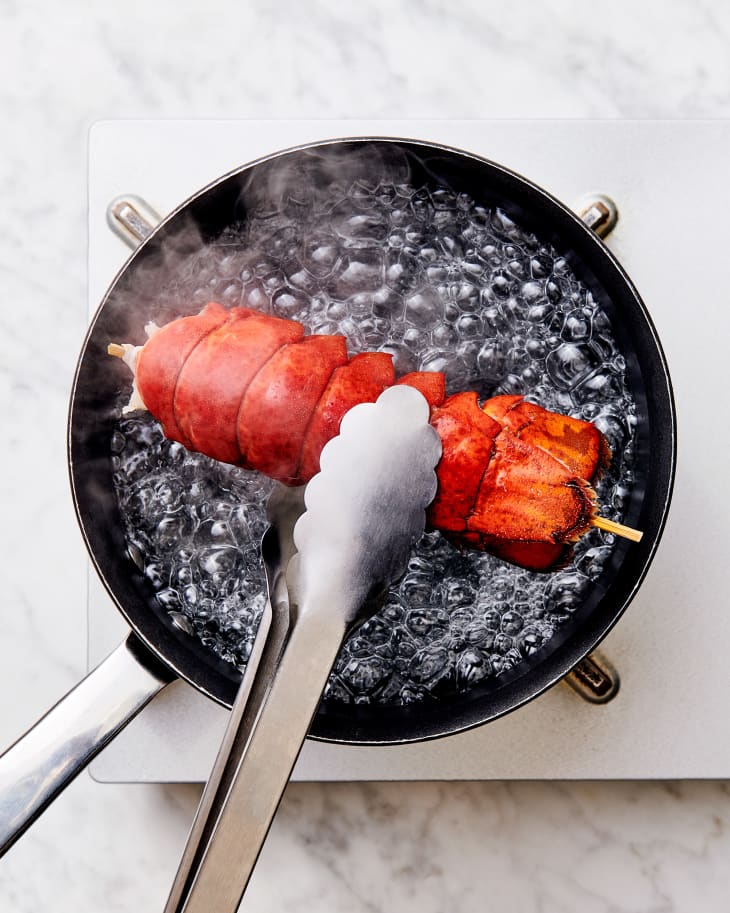


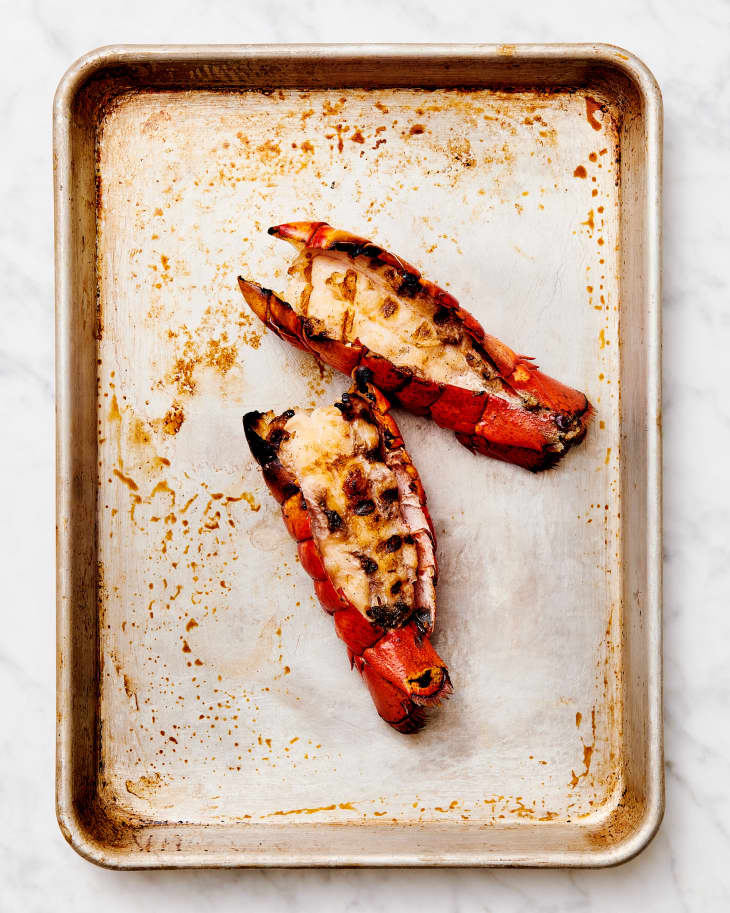
Post a Comment